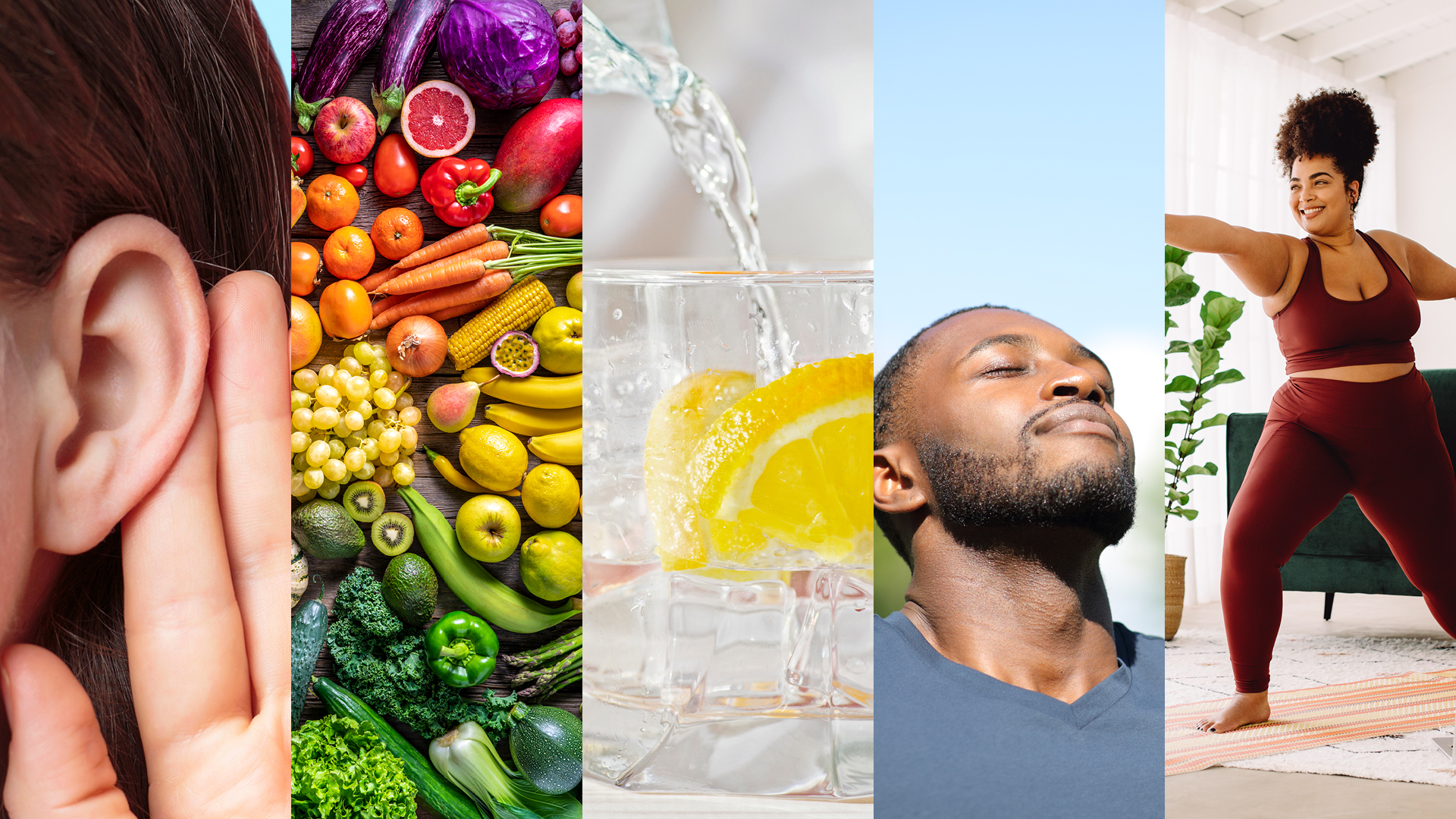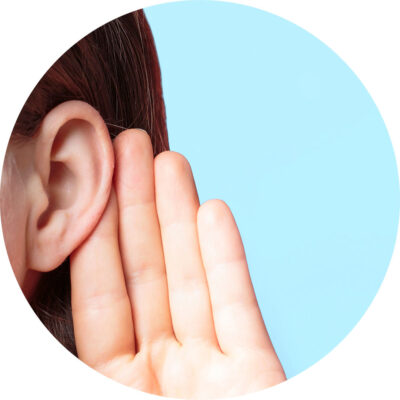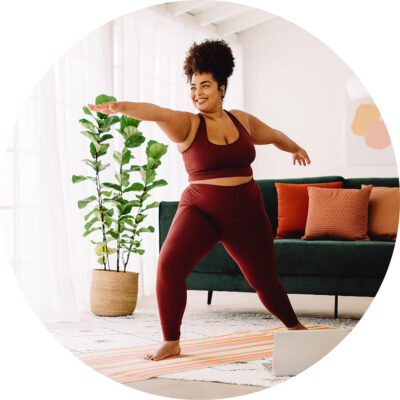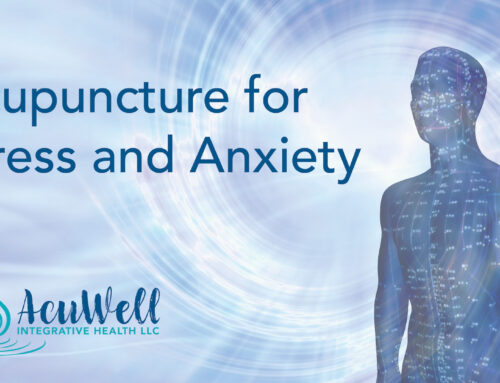Pillar 1: Physical Wellness
August 4, 2022

Physical wellness includes your entire physical world; your physical body, and your physical surroundings. Body wellness tends to be what we most commonly associate with when we are talking about health and well-being.

Listen to your body.
In our high-paced society, we have learned to ignore the instinctive signals our body has which indicate hunger, thirst, exhaustion, illness, and more. We shut them down and push through so that we don’t have to slow down from our go-go-go lifestyle. Taking the time to check in with your body, and then meet your physical needs at that time, is the best tool we have for living a healthy lifestyle.
Set a regular sleep schedule and stick with it. Sleep is the critical time when our bodies and minds have the chance to heal and restore. Not everyone needs the same amount of sleep; some can survive on less sleep while others may need more. The average amount of sleep we should be getting is 7-9 hours per night. Research suggests that going to bed by or before 11 pm is the optimal time to get the most restorative sleep.

Listen to your body.
In our high-paced society, we have learned to ignore the instinctive signals our body has which indicate hunger, thirst, exhaustion, illness, and more. We shut them down and push through so that we don’t have to slow down from our go-go-go lifestyle. Taking the time to check in with your body, and then meet your physical needs at that time, is the best tool we have for living a healthy lifestyle.
Set a regular sleep schedule and stick with it. Sleep is the critical time when our bodies and minds have the chance to heal and restore. Not everyone needs the same amount of sleep; some can survive on less sleep while others may need more. The average amount of sleep we should be getting is 7-9 hours per night. Research suggests that going to bed by or before 11 pm is the optimal time to get the most restorative sleep.
Eat a rainbow.
Incorporating a wide variety of fresh vegetables onto your plate will ensure that your body is getting a broad spectrum of minerals and nutrients. A good rule of thumb is to make 50% of each meal non-starchy vegetables, such as broccoli, spinach, or Brussel sprouts. When choosing fruits, reach for lower sugar options such as berries, pears, or kiwis.
Count nutrients, not calories. Instead of tracking how many calories you are consuming, try focusing on eating nutrient-dense foods. What does this look like? Fill your plate with organic veggies. Choose high-quality proteins such as wild-caught salmon, grass-fed beef, or organically raised chicken. Consume good fats like coconut oil, avocado, butter, olive oil, or lard instead of margarine, canola oil, or vegetable oil. Eliminate processed foods and switch to whole grains instead.


Eat a rainbow.
Incorporating a wide variety of fresh vegetables onto your plate will ensure that your body is getting a broad spectrum of minerals and nutrients. A good rule of thumb is to make 50% of each meal non-starchy vegetables, such as broccoli, spinach, or Brussel sprouts. When choosing fruits, reach for lower sugar options such as berries, pears, or kiwis.
Count nutrients, not calories. Instead of tracking how many calories you are consuming, try focusing on eating nutrient-dense foods. What does this look like? Fill your plate with organic veggies. Choose high-quality proteins such as wild-caught salmon, grass-fed beef, or organically raised chicken. Consume good fats like coconut oil, avocado, butter, olive oil, or lard instead of margarine, canola oil, or vegetable oil. Eliminate processed foods and switch to whole grains instead.

Drink enough water.
Water is life! The human body is made of up to 60% water, and staying hydrated is critical for health. Not drinking enough water can leave you feeling tired or sluggish, headachy or dizzy, muscle crampy or dry. Dehydration can increase food cravings, especially for sweets, and can lead to weight gain. How do you know how much water to drink? A good baseline is to divide your weight in half and shoot for that many ounces of water per day. For example, if you weigh 120 pounds, a good target baseline would be 60 ounces of water per day. Increase your water intake with increased activity levels.

Drink enough water.
Water is life! The human body is made of up to 60% water, and staying hydrated is critical for health. Not drinking enough water can leave you feeling tired or sluggish, headachy or dizzy, muscle crampy or dry. Dehydration can increase food cravings, especially for sweets, and can lead to weight gain. How do you know how much water to drink? A good baseline is to divide your weight in half and shoot for that many ounces of water per day. For example, if you weigh 120 pounds, a good target baseline would be 60 ounces of water per day. Increase your water intake with increased activity levels.
Breathe.
Breath is life, and yet we give such little attention to it. It is the first and the last thing we do in life. Take a moment now and shift your focus to your breathing. What do you notice? Is your breath high and shallow, only filling your chest? Or do your breaths expand all the way into your belly, deep and full? Studies have shown that it is impossible to breathe deeply and feel stressed or anxious at the same time. Take time throughout each day to connect with your breath, and consciously slow down and deepen any shallow, short “anxiety breathing”. You will notice a deeper sense of calm as you navigate your full life!


Breathe.
Breath is life, and yet we give such little attention to it. It is the first and the last thing we do in life. Take a moment now and shift your focus to your breathing. What do you notice? Is your breath high and shallow, only filling your chest? Or do your breaths expand all the way into your belly, deep and full? Studies have shown that it is impossible to breathe deeply and feel stressed or anxious at the same time. Take time throughout each day to connect with your breath, and consciously slow down and deepen any shallow, short “anxiety breathing”. You will notice a deeper sense of calm as you navigate your full life!

Exercise for your body and brain.
We all know that exercise is good for our bodies. From improving cardiovascular health and circulation to building endurance and stability, the physical benefits of exercise are well known. But the mental benefits of exercise are just as impressive and important. From reducing stress and elevating mood to sharpened memory and reduced cognitive decline, physical exercise is phenomenal for both body and the mind!

Exercise for your body and brain.
We all know that exercise is good for our bodies. From improving cardiovascular health and circulation to building endurance and stability, the physical benefits of exercise are well known. But the mental benefits of exercise are just as impressive and important. From reducing stress and elevating mood to sharpened memory and reduced cognitive decline, physical exercise is phenomenal for both body and the mind!
Over the next five weeks, Dr. Cox will dive into tips to prioritize each pillar in your world! Stay tuned and be sure to connect with Dr. Cox on TikTok, LinkedIn, Facebook & Instagram. Ready to meet with Dr. Cox to begin a plan to prioritize the 5 Pillars of Health in your life? Make an appointment today.





